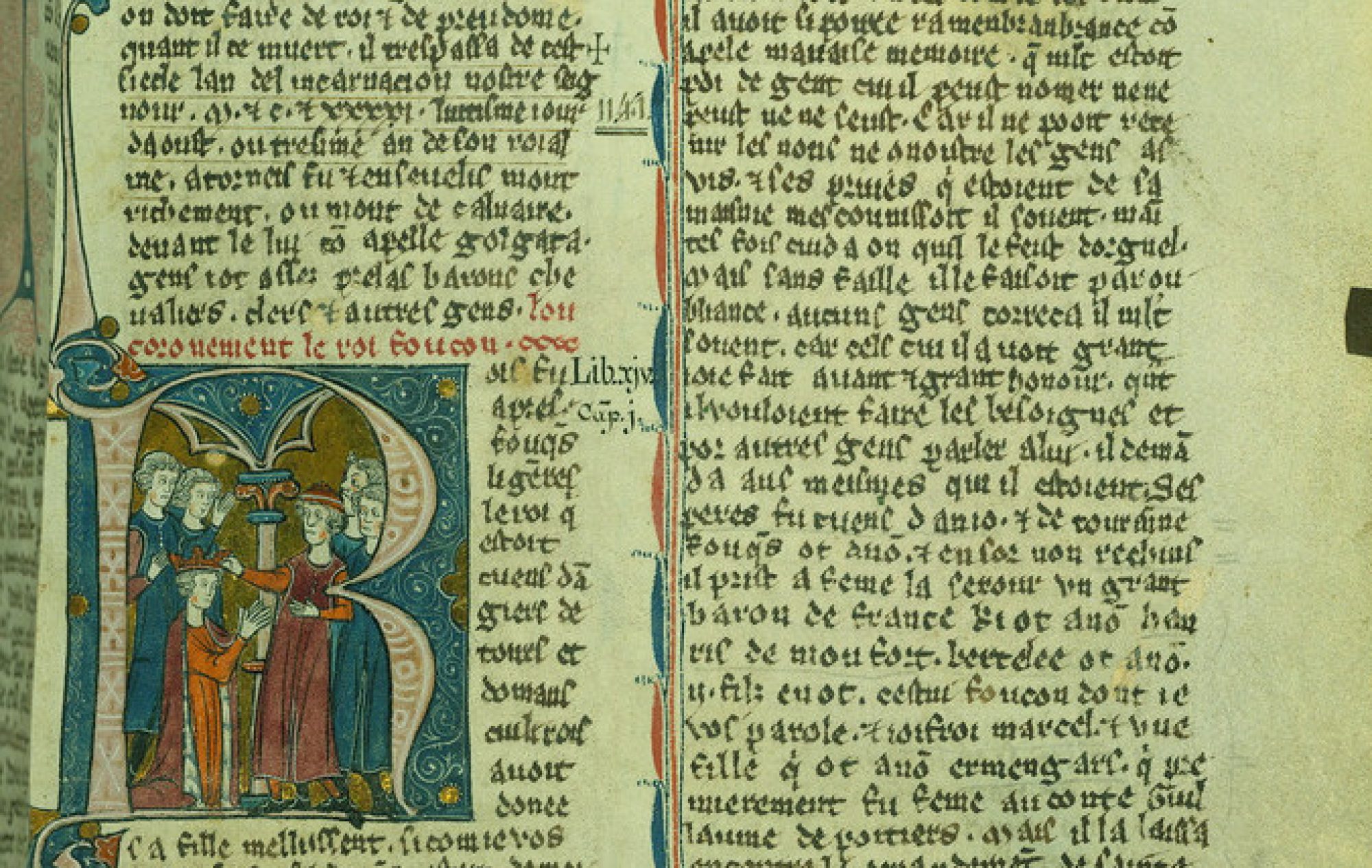The Crusades is also an event that builds a contextual understanding of the letter of Prester John. In short, the Crusades were a series of religious wars between Christians and Muslims to control sacred holy sites, such as Jerusalem, Antioch, Edessa, and Jaffa.1 These conflicts occurred through eight expeditions that took place between 1096 and 1291.

The First Crusade
The Crusades were initiated by the Byzantine Empire. Wanting to recapture Holy Land from Muslim control, in 1095 they allied with their political rivals, the Roman Catholic Church of the West.2 Upon the arrival of the Crusade leaders to Constantinople for the first Crusade in 1096, Emperor Alexius I requested that they swear two oaths. The first oath was for the Crusaders to ceding their captured land to the Byzantine Empire after acquiring it. The second was an oath of loyalty to Byzantine power (recalling the East-West Schism in 1054).3 While the oaths were accepted by some leaders, others refused, yet all carried on to defeat the Muslims in capturing Jerusalem and Nicea (present-day İznik, Turkey).
The Significance of the First Crusade
While the Roman Catholic and Byzantine Christians joined as allies to fight the Islamic regime, there remained a sense of separatism between them. This is evinced by the fact that Emperor Alexius I wanted the Crusaders from the West to swear their allegiance to his kingdom, and that in turn, the majority refused to do so (as stated above). This exemplifies that although the two rivals were working together, there was still tension and competition between them.
The Second Crusade
Next, was the second Crusade, occurring from 1147-1149. Following the Crusaders’ success in the first Crusade, Muslim forces announced jihad (holy war) and captured Edessa (present-day Urfa, Turkey). Edessa was one of four Crusader states at the time, and was considered a centre of early Christianity.4 Consequently, the Crusaders returned; unable to recapture Edessa, they focused on Damascus, which was the first Islamic caliphate (the jurisdiction or government of an Islamic ruler, known as a caliph). The Muslims successfully fended off the strike, and the Crusade collapsed.5
The Significance of the Second Crusade
Prester John’s letter is thought to be written in 1165, which was in between the second and third Crusades. The second Crusade was a significant blow for the Crusaders of the Roman Catholic Church, and there is no doubt they would have felt humiliated and discouraged. That being said, Prester John’s letter would have raised morale, as it speaks of a kingdom of which its ruler not only supports their cause but boasts to their political rival of the enchanting and mysterious kingdom of which he rules. Perhaps this letter which flaunts the strength and greatness of Prester John’s kingdom is meant to convey that although the west Crusaders were defeated, they have an ally whose kingdom is a force with which to be reckoned.
The Fourth Crusade
The next Crusade important for the context of the letter is the fourth, which took place from 1202-1204. However, important to note is that this ‘Crusade’ consisted only of battles between Christians; no Muslims were involved.6 While Pope Innocent III proclaimed a Crusade in 1198 for the purpose of taking areas in Egypt, the Crusaders deviated from his request, and instead formed a deal with the Byzantine emperor’s nephew, Alexius.7 Alexius proposed that he would provide the Crusaders with money to pay off their debts, and give Constantinople to Rome, amongst other things. In exchange, he asked for the removal of his uncle as emperor, allowing him to become the new patriarch.8 The Crusaders signed such an agreement in 1203, and the regime of Constantinople was usurped to allow young Alexius to become Emperor Alexius IV.9 The reign of Emperor Alexius IV was short-lived, as he was met with resistance and killed during a coup. With his promise to the Crusader’s null, the Crusaders captured and destroyed Constantinople out of revenge in 1204.10
The Significance of the Fourth Crusade
The fourth Crusade displays the moment when the fragile bond of the Western Catholic Crusaders and the Eastern Byzantine Catholics was severed. The Crusaders twice took down the regime of Constantinople due to their greed, so much so that the city was devastated. This is important to the letter of Prester John as it proves that the relation between the two Christian empires was indeed rocky, to say the least and that perhaps it is right to say that the letter was a warning and threat from one “ally” to another.
- Jonathan Riley-Smith, The crusades: A history (London, England: Bloomsbury Publishing, 2014), 12.
- Ibid, 30.
- Ibid, 54.
- Giles Constable, “The Second Crusade As Seen By Contemporaries,” Traditio 9 (1953): 220, http://www.jstor.org/stable/27830277.
- Ibid, 221.
- Thomas Madden, “Outside and Inside the Fourth Crusade,” The International History Review 17, no. 4 (1995): 738, http://www.jstor.org/stable/40107441.
- Arthur Winfield Hodgman, “The Fourth Crusade,” The Classical Journal 43, no. 4 (1948): 225, http://www.jstor.org/stable/3292740
- Ibid.
- Ibid, 227.
- Jonathan Riley-Smith, The crusades: A history (London, England: Bloomsbury Publishing, 2014), 180.
- Early Crusades. 1993. Norman B. Leventhal Map Center, Boston, https://collections.leventhalmap.org/search/commonwealth:q524n6167
